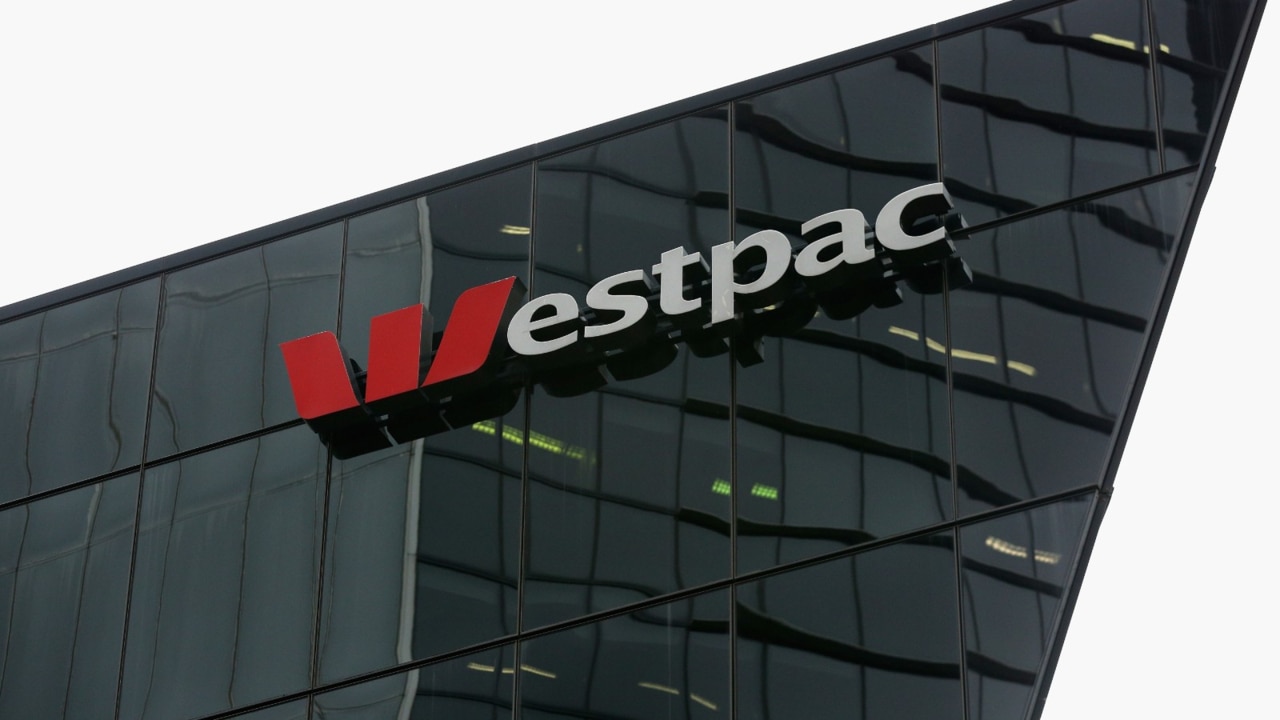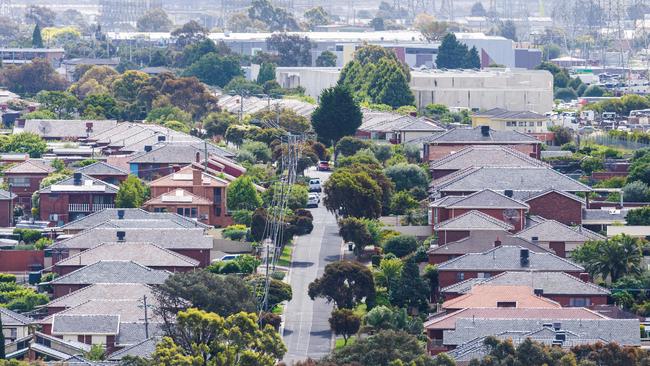CBA cuts its 3pc serviceability buffer for some as borrowers face the pinch of rising rates
Commonwealth Bank is cutting its 3 per cent refinance serviceability requirement for some borrowers as interest rates continue to climb.

Homebuyers who took advantage of a number of government programs to get into the housing market will be among those unable to take advantage of moves by Commonwealth Bank to dump its 3 per cent serviceability buffer for some refinancers.
CBA on Wednesday announced it would allow thousands of homeowners to refinance their loans at a 1 per cent serviceability buffer rather than the industry standard of 3 per cent.
This comes as many borrowers, who took out loans during recent years, find themselves unable to qualify for a new loan with a better rate due to serviceability standards put in place by the prudential regulator.
Separately, S&P Global Ratings on Wednesday said that signs of potential stress were starting to emerge in loan prepayments.
The ratings agency said its review of a number of residential backed mortgage securities, packages of home loans issued by banks and non-bank lenders to investors, showed prepayments of loans were slowing.
CBA said the changes to its serviceability buffers would only be extended to reliable borrowers, while those who bought properties under several affordability schemes or with poor repayment histories would be locked out of the cheaper loans.
Borrowers who are refinancing a loan which has been open for 12 months or more, with a loan to value ratio of better than 80 per cent and with no lender’s mortgage insurance, may be able to make use of CBA’s new refinancing offer.
However, those borrowers must have no delinquency of payments across loans with CBA or at other banks in the past 12 months, and cannot refinance sums greater than their existing loan, plus either $10,000 or 1 per cent of the amount being financed.
CBA said it would not offer the reduced refinance threshold to borrowers who held bridging loans or construction loans, or were part of a property share or guarantor arrangement.
Borrowers who took out loans using government guarantee schemes, such as those offered by Victoria and NSW would be ineligible to apply for one using a reduced serviceability buffer.
The lender said it would also lock out borrowers seeking to refinance to consolidate unsecured debts from credit cards or other loans, or top up or cash out funds “for any purposes outside the refinanced loan”.
CBA home buying executive general manager Michael Baumann said the bank recognised “some homeowners are facing challenges refinancing their home loans”.
“The alternative interest rate buffer servicing assessment rate of 1 per cent will support customers refinancing existing home-loan debts which do not pass the standard 3 per cent buffer over a 30 year period principal-and-interest loan, but who would otherwise be eligible to refinance to a CommBank home loan,” he said.
The move by CBA follows Westpac’s similar move in May to drop its serviceability buffer for refinancers and marks a step up in the mortgage wars between Australia’s biggest banks to secure market share.

CBA stressed that its move to slice its serviceability buffer had the blessing of the Australian Prudential Regulation Authority, which has faced criticism for its resistance to relaxing the loan ceilings as interest rates rise.
The Reserve Bank of Australia has raised rates 12 times since April last year, taking the cash rate from 0.1 per cent to 4.1 per cent in June.
CBA chief executive Matt Comyn said in February the 3 per cent buffer should be revisited when interest rates hit their peak.
However, market watchers are expecting several more rate rises in the months ahead.
APRA issued a warning to banks at the start of June to maintain interest rate buffers amid the potential for further rate rises and soaring inflation.
APRA chairman John Lonsdale told banks that it was “important that these loans are assessed on a case-by-case basis”.
But RateCity research director Sally Tindall said the problem the banks were seeking to address was caused by APRA holding the serviceability buffer too low for too long.
“At the end of the day the problem was created because rates were at record lows and the buffer was at 2.5 per cent,” she said. “People are stuck in mortgage prison.”
Ms Tindall said there were almost 500,000 borrowers who had taken out loans between June 2020 to today who might be unable to refinance.
“There’s billions of dollars worth of loans with a debt to income ratio of six times or more,” she said. “They’re the ones who need to refinance the most.”
S&P Global Ratings structured finance ratings director Erin Kitson said the slowdown was a “sign of stress” and was most evident in the nonconforming sector, which often captured borrowers with worse credit history or those who were self-employed.
“Ultimately when it comes to mortgage performance the employment performance is key but that is largely still positive,” she said.







To join the conversation, please log in. Don't have an account? Register
Join the conversation, you are commenting as Logout